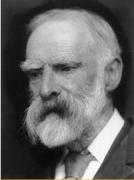|
|
||||||||||||||||||||||||
 |
Featured person
Recently added |
Ivor Beaumont (1886 - 1968): |
||||||||||||||||||||||
Ivor Beaumont was born in Yorkshire in 1886. He studied at Huddersfield College of Art and Royal College of Art In London before being employed as Art Master and Lecturer in Design at Building Trade School London in 1915, a position he held until his appointment as Principal of Belfast School of Art in 1919. Beaumont was the longest serving Headmaster in the history of the Belfast School of Art, retiring over thirty years later in 1951. In his long tenure Beaumont steered the school towards the refinement of classical art skills and defended the continuation of drawing from antiquity as a fundamental part of art education.
Beaumont enjoyed friendships with the artists Morris Harding and John Luke, however he was reportedly a somewhat strict Headmaster who had numerous conflicts with staff members and students alike. Alexander (Sandy) Pender Crichton, a Scottish born teacher at the School of Art 1929-31 was reprimanded by Beaumont for his design of an Art Deco poster for the School Ball, which the Headmaster found to be inappropriate due to its modern style. Beaumont also had a long running feud with Newton Penprase, who taught at the school from 1911-53. Mounting tension between the two men spilled over in January 1932, resulting in a physical altercation, after which Penprase was suspended. He was later reinstated but the two never reconciled. Despite his confrontations Beaumont was a driving force behind the Belfast School of art during the first half of the twentieth century. He fully supported the annual student art exhibition, believing it was ‘of huge importance to the image of the School in the community’, connecting students with the public and attracting visitors from art societies such as the Ulster Academy and Ulster Arts Club. Under Beaumont increasing numbers of Belfast art students applied for, and were awarded, scholarships to London Art Schools, rather than seeking further training in the South of Ireland or mainland Europe. It was while in London that Northern Irish artists, such as George MacCann, Mercy Hunter, Crawford Mitchell, Romeo Toogood, Tom Carr and William Easson Tocher experienced the consciously modern work and influence of contemporary British artists for the first time.
By the end of the 1930s, largely due to Beaumont’s efforts, the Belfast School of Art was able to award its own local Art Diplomas and Art Teaching Certificates. Local diplomas such as these continued to be awarded until the introduction of the National Diploma in Art and Design in the 1960s, and were a simplified version of the previous national certificates. In addition to his achievements as Headmaster of the Belfast School of Art Beaumont was a member of the Ulster Committee for the Arts and Crafts Society of Ireland exhibition in 1925, on the Art Advisory Council, which was initiated to integrate the arts with state funding and sponsorship, in 1936, acted as vice-president of the Ulster Arts Club in 1945, and was represented on the Northern Irish Art committee for the Festival of Britain in 1951. Though he was primarily an art teacher, Beaumont worked as an apprentice architect, and his own works include a war memorial in Huddersfield and a painted mural at the Belfast Technical Institute, which has been painted over. After his retirement Beaumont returned to Huddersfield 1957 and he died in 1968.
| Born: | 1886 |
| Died: | 1968 |
| Emma McVeigh |
| Bibliography: Shea, P: A History of the Ulster Arts Club, 1971; Catto, M: A school of art for Belfast 1847-1960, Belfast, 2009; Belfast School of Art Education Committee Minutes, 1943, Belfast School of Art archive 1930-59, University of Ulster, Belfast. |


Home | Our Policies | Plaques | Browse | Search | Sponsors | Links | Help | Contact
Privacy & Disclaimer | Cookie Policy | Site Map | Website Design By K-Point
© 2024 Ulster History Circle









